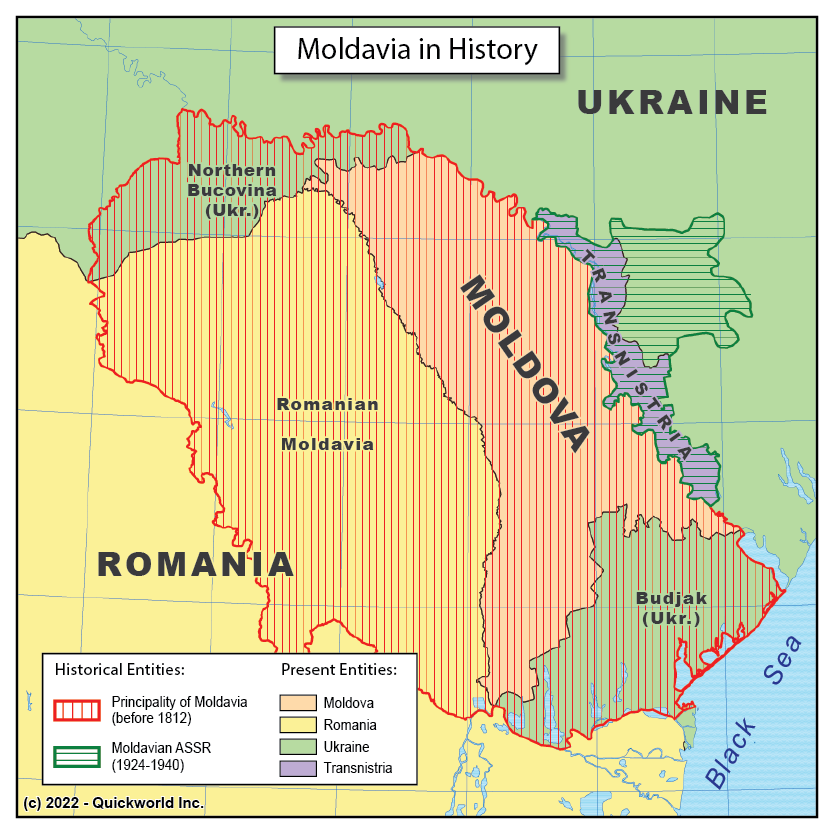The country currently named Moldova was known in English as Moldavia until the breakup of the Soviet Union. The name Moldavia is based on a politically complex history. In fact, there are three contiguous regions that barely overlap and claimed at some point in history to be "Moldavia". Historical Moldavia is a medieval region mostly populated by eastern romance speaking tribes ("Romanians") that extends roughly from the Carpathian Mountains in the West to the Dniester River in the East. In 1812, The Principality of Moldavia was split along the Prut River. The Western part, under Ottoman control, remained simply known as Moldavia, while the Eastern part, under Russian control, became known as Bessarabia. Moldavia merged with Wallachia to form Romania in 1859. Bessarabia participated in the Russian revolution and renamed itself the Democratic Republic of Moldavia, but the region was soon ceded to Romania at the end of World War I. With views at reannexation, the Soviet Union created a Moldavian Autonomous Republic to the East of the Dniester, in a region that only had a minority of Romanian people and had never been part of Moldavia. After the reannexation of Bessarabia in 1944, the Moldavian ASSR was split between Ukraine and the new Moldavian Soviet Republic. Upon the breakup of the Soviet Union in 1991, the Moldavian lands located East of the Dniester seceded from Moldavia to create Transnistria, officially the Pridnestrian Moldavian Republic, whose sovereignty is not recognized by any UN member country. While Moldova claims sovereignty over Transnistria, it only controls the regions between the Prut and the Dniester. More on Moldavia on Quickworld
Moldavia


